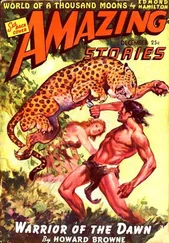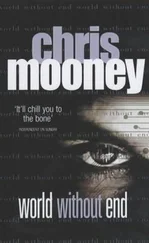Having rearranged things yet again, the Brazos will choose a new course to the sea—a shorter one, because the sea will be nearer. New bottomlands will form, higher up, and eventually new hardwoods will appear (assuming that Chinese tallow trees, whose waterproof seeds should make them permanent colonizers, share the riparian space with them). Texas City will be missing; hydrocarbons leaching out of its drowned petrochemical plants will swirl and dissipate in the currents, with a few heavy-end crude residues dumped as oil globules on the new inland shores, eventually to be eaten.
Below the surface, the oxidizing metal parts of chemical alley will provide a place for Galveston oysters to attach. Silt and oyster shells will slowly bury them, and will then be buried themselves. Within a few million years, enough layers will amass to compress shells into limestone, which will bear an odd, intermittent rusty streak flecked with sparkling traces of nickel, molybdenum, niobium, and chromium. Millions of years after that, someone or something might have the knowledge and tools to recognize the signal of stainless steel. Nothing, however, will remain to suggest that its original form once stood tall over a place called Texas, and breathed fire into the sky.
CHAPTER 11

The World Without Farms
WHEN WE THINK civilization, we usually picture a city. Small wonder: we’ve gawked at buildings ever since we started raising towers and temples, like Jericho’s. As architecture soared skyward and marched outward, it was unlike anything the planet had ever known. Only beehives or ant mounds, on a far humbler scale, matched our urban density and complexity. Suddenly, we were no longer nomads cobbling ephemeral nests out of sticks and mud, like birds or beavers. We were building homes to last, which meant we were staying in one place. The word civilization itself derives from the Latin civis , meaning “town dweller.”
Yet it was the farm that begat the city. Our transcendental leap to sowing crops and herding critters—actually controlling other living things—was even more world-shaking than our consummate hunting skill. Instead of simply gathering plants or killing animals just prior to eating them, we now choreographed their existence, coaxing them to grow more reliably and far more abundantly.
Since a few farmers could feed many, and since intensified food production meant intensified people production, suddenly there were a lot of humans free to do things other than gather or grow meals. With the possible exception of Cro-Magnon cave artists, who may have been so esteemed for their talents that they were relieved of other duties, until agriculture arrived, food-finding was the only occupation for humans on this planet.
Agriculture let us settle down, and settlement led to urbanity. Yet, imposing as skylines are, farmlands have much more impact. Nearly 12 percent of the planet’s landmass is cultivated, compared to about 3 percent occupied by towns and cities. When grazing land is included, the amount of Earthly terrain dedicated to human food production is more than one-third of the world’s land surface.
If we suddenly stopped plowing, planting, fertilizing, fumigating, and harvesting; if we ceased fattening goats, sheep, cows, swine, poultry, rabbits, Andean guinea pigs, iguanas, and alligators, would those lands return to their former, pre-agro-pastoral state? Do we even know what that was?
For an idea of how the land on which we’ve toiled might or might not recover from us, we can begin in two Englands—one old, one New.
In any New England woods south of Maine’s boreal wilderness, within five minutes you see it. A forester’s or ecologist’s trained eye notices it just by spotting a stand of big white pine, which only grow in such uniform density in a former cleared field. Or they spot clusters of hardwoods—beech, maples, oaks—of similar age, which sprouted in the shade of a now-missing stand of white pines that were cut or blown away in a hurricane, leaving hardwood seedlings an open sky to fill with their canopies.
But even if you don’t know a birch from a beech, you can’t miss seeing it around knee-height, camouflaged by fallen leaves and lichens, or wrapped in green brambles. Someone has been here. The low stone walls that crisscross the forests of Maine, Vermont, New Hampshire, Massachusetts, Connecticut, and upstate New York reveal that humans once staked boundaries here. An 1871 fencing census, writes Connecticut geologist Robert Thorson, showed at least 240,000 miles of handmade stone walls east of the Hudson River—enough to reach to the moon.
As the last glaciers of the Pleistocene advanced, stones were ripped from granite outcroppings, then dropped as they melted back. Some lay on the surface; some were ground into the subsoil, to be periodically heaved up by frost. All had to be cleared along with trees so that transplanted European farmers could start over in a New World. The stones and boulders they moved marked the borders of their fields and penned their animals.
So far from large markets, raising beef wasn’t practical, but for their own use New England’s farmers kept enough cattle, pigs, and dairy cows that most of their land was pasture and hay fields. The rest was in rye, barley, early wheat, oats, corn, or hops. The trees they downed and the stumps they yanked were of the mixed hardwood, pine, and spruce forests we identify with New England today—and we do, because they’re back.
Unlike almost anywhere else on Earth, New England’s temperate forest is increasing, and now far exceeds what it was when the United States was founded in 1776. Within 50 years of U.S. independence, the Erie Canal was dug across New York State and the Ohio Territory opened—an area whose shorter winters and loamier soils lured away struggling Yankee farmers. Thousands more didn’t bother to return to the soil after the Civil War, but headed instead into factories and mills powered by New England’s rivers—or headed west. As the forests of the Midwest began to come down, the forests of New England began coming back.
The unmortared stone walls built by three centuries of farmers flex as soil swells and shrinks with the seasons. They should be part of the landscape for a few more centuries, until the leaf litter turns to more soil and buries them. But how similar are the forests growing around them to what was here before the Europeans arrived, or the Indians before them? And untouched, what would they become?
In his 1980 book Changes in the Land , geographer William Cronon challenged historians who wrote of Europeans encountering an unsullied forest primeval when they first arrived in the New World—a forest supposedly so unbroken that a squirrel might leap treetops from Cape Cod to the Mississippi without ever having to touch ground. Indigenous Americans had been described as primitives who inhabited and fed off the forest, with little more impact on it than the squirrels themselves. To accommodate the Pilgrims’ account of Thanksgiving, it was accepted that American Indians practiced limited, unobtrusive agriculture involving corn, beans, and squash.
We now know that many of the allegedly pristine landscapes of North and South America were actually artifacts, the result of enormous changes wrought by humans that started with the slaughter of megafauna. The first permanent Americans burned underbrush at least twice a year to make hunting easier. Most fires they set were low-intensity, meant to clear brambles and vermin, but they also selectively torched entire stands of trees to shape the forest into traps and funnels to corner wildlife.
The coast-to-Mississippi treetop traverse would have been possible only for birds. Not even flying squirrels could have managed it, because it took wings to cross large swathes where forest had been thinned to parkland or razed completely. By observing what grew after lightning opened clearings, paleo-Indians learned to create berry patches and herb-filled meadows to attract deer, quail, and turkeys. Finally, fire allowed them to do exactly what the Europeans and their descendants later came to do on such a grand scale: They farmed.
Читать дальше












